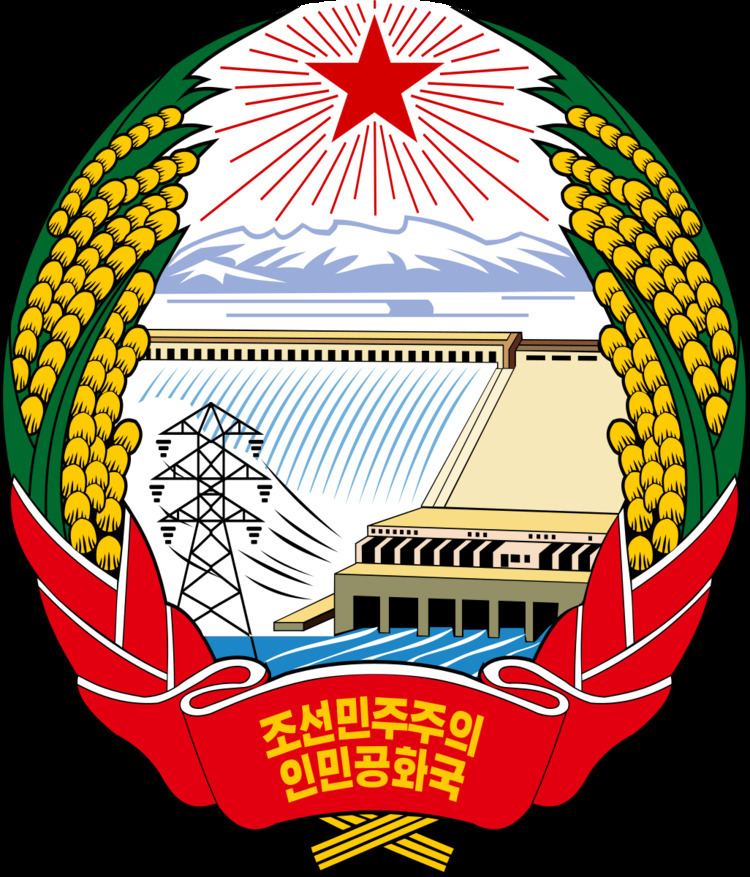Formed 1948 (current, 2013) | Jurisdiction North Korea | |
 | ||
Minister responsible Pak Pong-ju, Premier of North Korea | ||
The Cabinet of the Democratic People's Republic of Korea is, according to the Constitution of North Korea, the administrative and executive body and a general state-management organ in the Government of North Korea. The Cabinet's principal newspaper is Minju Choson.
Contents
History
In North Korea's first constitution, adopted in 1948, the executive powers were vested in the Cabinet, chaired by Kim Il-sung himself. The 1972 constitution saw the establishment of the post of President of North Korea which led the executive branch, and the cabinet was split into two organizations: The Central People's Committee and the State Administration Council. The Central People's Committee provided the highest visible institutional link between the government and the party and serves in effect as a de facto super-cabinet. The National Defence Commission was then sub-committee of this body. The CPC's formal powers were all-inclusive and it was chaired by the President. Among its responsibilities are formulating domestic and foreign policies, directing the work of the State Administration Council and its local organs, directing the judiciary, ensuring the enforcement of the constitution and other laws, appointing or removing the vice premiers and cabinet members, establishing or changing administrative subdivisions or their boundaries, and ratifying or abolishing treaties signed with foreign countries. The CPC also may issue decrees, decisions, and instructions. The State Administration Council was guided by the CPC and was led by a premier (chong-ri) and included vice premiers (bochong-ri), ministers (boojang), committee chairmen, and other cabinet-level members of central agencies. It was responsible for the formulation of state economic development plans and measures for implementing them, the preparation of the state budget, and the handling of other monetary and fiscal matters.
1982 saw the People's Armed Forces and Public Security Ministries assigned directly to the President together with the State Inspection Commission.
In 1990, by a CPC decision, the NDC became fully independent from it as a separate institution, and 1992 constitutional amendments assigned it directly to the Supreme People's Assembly. In 1998 amendments to the Constitution, the Central People's Committee and the State Administration were abolished, and the Cabinet was re-created. Thus, the Cabinet is not only the highest executive enforcement organ but was also expanded to become the general State management organ.
Emphasizing its expanded role, on January 1999 Kim Jong-il stated that
"The party organizations and party cadres should not intervene in administrative matters. The party should help the cabinet to be responsible for all economic affairs. Last year we made a new governmental system where the cabinet is supposed to be the control tower of the economy...No organizational unit should handle economic problems without consulting the cabinet".
Selection
The cabinet is appointed and accountable to the Supreme People's Assembly, the North Korean unicameral parliament. The SPA chooses the Premier of North Korea who appoints three vice premiers and the cabinet's ministers. All members of the cabinet are members of the Workers' Party of Korea which rules the country since its establishment in 1948. While the SPA is not in session, the cabinet is accountable to the Presidium of the Supreme People's Assembly.
Powers and responsibilities
The Cabinet, as the executive branch of the North Korean state, is responsible for implementing the state's economic policies, as guided by the Workers' Party. The cabinet is not responsible for defense and security issues, as those are handled by the National Defense Commission. Thus, the security organizations such as the Korean People's Army, Ministry of People's Security and State Security Department report and subordinated directly to the National Defense Commission. The Cabinet convenes a plenary meeting and an executive meeting. The plenary meeting consists of all the Cabinet members, while the executive meeting is kind of a presidium, and comprises fewer people, including the Premier, vice premier and other Cabinet members whom the Premier nominates. The cabinet forms acts in the form of decisions and directives. The Cabinet shall:
At a local level, the Cabinet supervises the Local People's Committees.
Structure
The Cabinet is composed of the following as of 10 April 2014:
